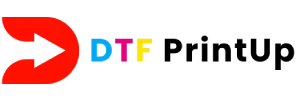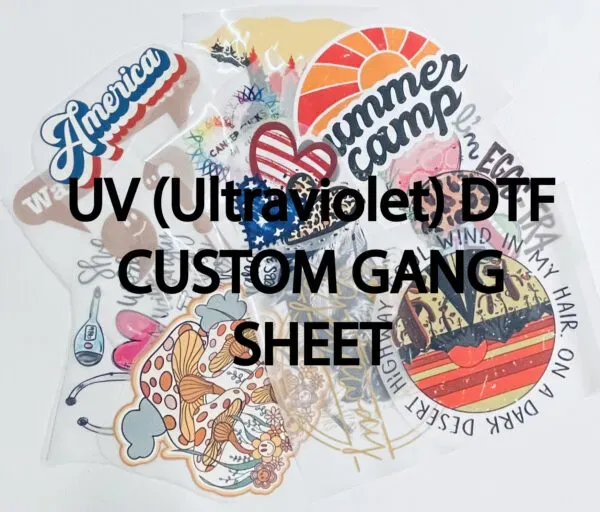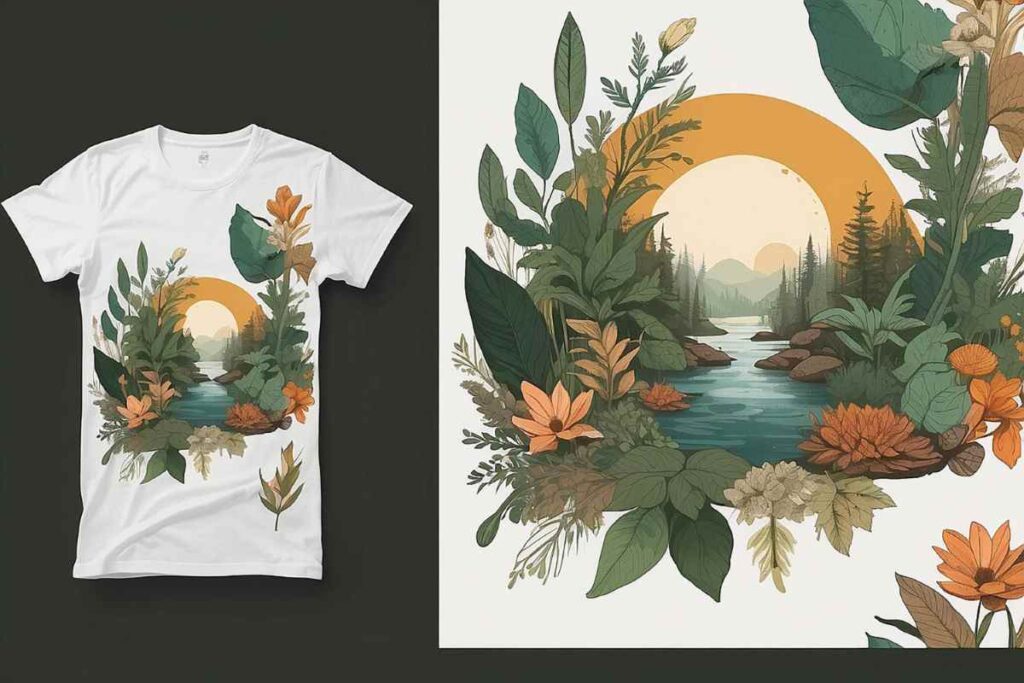UV DTF Gangheet is leading a transformative wave in the realm of high-quality textiles, setting new standards for precision and innovation. As the textile industry rapidly evolves, UV Direct-to-Film (DTF) printing technology is at the forefront, offering businesses unparalleled advantages with vibrant, durable, and eco-friendly printing solutions. This cutting-edge approach addresses the growing demand for custom textiles, enabling designers to create unique pieces that resonate with today’s consumers. By combining UV curing techniques with high-quality inks, manufacturers can achieve stunning results that are both aesthetically pleasing and long-lasting. In this article, we will dive deep into the world of UV DTF Gangheet, examining its capabilities, market trends, and the future of textile printing innovations.
Introducing the concept of UV DTF Gangheet, one can appreciate how advances in UV direct-to-film technology are reshaping textile manufacturing. This innovative printing method is revolutionizing the way fabrics are customized and created, appealing to a broad spectrum of industries from fashion to home decor. The eco-friendly nature of these printing techniques also aligns with contemporary consumer values, making them an essential consideration for brands. As the market shifts towards personalized textile solutions, understanding the nuances of this technology becomes crucial for anyone involved in textile design and production. In the following sections, we will explore the remarkable benefits and applications of this textile printing innovation.
The Advantages of UV DTF Printing for High-Quality Textiles
UV DTF printing technology offers several advantages that make it a game changer in the world of textile printing. First and foremost, the capability to deliver vibrant colors is unparalleled. Unlike traditional printing methods, which can often dull or fade, UV DTF maintains a broad color gamut, allowing designers to explore bold and intricate designs that are visually striking. This vibrancy is crucial for fashion designers who strive to create textiles that stand out in a competitive market and resonate with consumers looking for unique options.
Additionally, durability plays a significant role in the appeal of UV DTF technology. The cured inks are resistant to wear and tear, UV rays, and washing, ensuring the longevity of the print. This is essential for textiles used in apparel and home furnishings alike, as consumers will appreciate products that maintain their quality over time. With the ability to withstand countless laundry cycles without fading, UV DTF is becoming the preferred choice for brands aiming to deliver high-quality textiles that pass the test of time.
Exploring Eco-Friendly Aspects of UV DTF Gangheet
One of the standout features of the UV DTF Gangheet is its commitment to eco-friendly printing practices. In an era where sustainability is a significant concern for consumers, eco-friendly inks used in this printing technology provide an attractive alternative to traditional solvents that may be harmful to the environment. Brands that adopt UV DTF technology not only boost their sustainability credentials but also attract a growing segment of environmentally-conscious consumers, thereby enhancing their market position.
Moreover, UV DTF printing minimizes waste throughout the production process. The efficiency of the curing technology reduces the evaporation of inks and chemicals, allowing for better resource management. As the textile industry increasingly faces pressure to reduce its carbon footprint, adopting environmentally responsible printing methods like UV DTF becomes essential for manufacturers looking to stay relevant and competitive.
Custom Textiles: The Future of Fashion with UV DTF Technology
As the demand for custom textiles continues to surge, UV DTF technology positions itself at the forefront of this trend. This innovative printing method enables designers to create intricate, personalized garments that reflect individual styles, catering to the desire for unique fashion statements. The flexibility of UV DTF allows for small production runs, which is ideal for limited edition releases or bespoke clothing lines—something that traditional textile printing methods cannot efficiently accommodate.
Furthermore, the integration of digital technology within UV DTF allows for rapid prototyping and design alterations. Designers can quickly experiment with various patterns and colors, receiving immediate visual feedback. This agility not only shortens the design cycle but also empowers creativity, making it easier for fashion brands to stay on-trend and relevant in the fast-paced fashion market. With UV DTF, the future of custom textiles is bright and full of possibilities.
Market Trends Influencing UV DTF Adoption
The textile printing market is undergoing a transformative shift, with UV DTF technology gaining significant momentum as an industry favorite. Reports highlight that a growing number of brands are embracing digital printing solutions, leading to increased customization and shorter lead times. As consumer preferences evolve towards personalized products, businesses that leverage UV DTF technology will find themselves ahead of the curve, meeting the needs of discerning customers who value uniqueness and quality.
Moreover, the projected growth of the digital printing market through 2025 showcases the rising acceptance of modern printing technologies. Companies investing in UV DTF not only improve their operational efficiency but also respond to the broader market trends that favor sustainability and customization. Those who adopt UV DTF early will likely establish themselves as market leaders within their niche, capitalizing on the increasing consumer demand for innovative textile solutions.
The Versatile Applications of UV DTF Gangheet in Various Sectors
The versatility of UV DTF Gangheet extends beyond fashion, permeating various sectors of the textile industry. For instance, promotional product companies are increasingly utilizing UV DTF printing to produce custom items such as branded apparel, bags, and accessories with high-quality, eye-catching designs. The rapid production rates and the ability to achieve fine detail make this technology advantageous for businesses needing quick turnarounds while maintaining a polished appearance.
Additionally, the home textile market is leveraging UV DTF technology to produce stunning interior furnishings that emphasize durability and style. Whether it’s decorative cushions, curtains, or upholstery, the reliability and aesthetic appeal of textiles printed using UV DTF make them highly sought after by homeowners and design professionals alike. As the scope of UV DTF applications expands, it showcases the technology’s adaptability and relevance across diverse markets.
Future Innovations in UV DTF Technology and Its Impact
Looking toward the future, UV DTF printing is poised to undergo significant innovations that will further enhance its capabilities. Anticipated advancements, such as the integration of automation in production, promise to streamline processes, reduce labor costs, and boost output efficiency. This automation will not only make UV DTF more accessible for businesses of all sizes but will also help to fulfill the rising demand for quick and customizable textile solutions.
Additionally, the incorporation of artificial intelligence could bring about transformative changes in the way printing is managed and executed, ensuring consistent quality and fewer errors. As the technology evolves, it may also offer even greater customization options, allowing designers to push design boundaries and create more intricate patterns seamlessly. The ongoing commitment to innovation will solidify UV DTF’s role in shaping the future landscape of textile printing, keeping it at the forefront of fashion and design.
Frequently Asked Questions
What is UV DTF Gangheet and how does it enhance textile printing?
UV DTF Gangheet is a cutting-edge textile printing technology that utilizes UV Direct-to-Film (DTF) printing. It enhances textile printing by using UV light to cure inks on films which are applied to fabrics, resulting in vibrant, durable prints that are resistant to wear and washing. This technology allows for high-quality textiles with exceptional color depth, making it ideal for fashion and promotional products.
How does UV DTF technology contribute to eco-friendly printing in textiles?
UV DTF technology contributes to eco-friendly printing by using sustainable inks that minimize environmental impact. This includes reducing harmful emissions during the printing process and decreasing waste. By adopting UV DTF Gangheet, textile manufacturers can offer high-quality and eco-conscious options, appealing to consumers who prioritize sustainability in their purchasing decisions.
What advantages does UV DTF Gangheet offer over traditional textile printing methods?
UV DTF Gangheet offers several advantages over traditional textile printing, including instant drying times due to UV curing, vibrant color output, and increased durability against scratches and washes. This results in stronger and longer-lasting designs on high-quality textiles, making it an appealing choice for brands seeking to stand out in the competitive market.
In what industries is UV DTF Gangheet technology most commonly applied?
UV DTF Gangheet technology is most commonly applied in various industries, including fashion, promotional products, and home textiles. Designers in the fashion industry use it for creating unique garments, while businesses leverage its custom printing capabilities for promotional items like bags and apparel. Additionally, homeowners utilize it to enhance interiors with vibrant, durable fabrics.
What market trends are influencing the adoption of UV DTF Gangheet technology?
Current market trends influencing the adoption of UV DTF Gangheet technology include a growing demand for custom and personalized textiles, particularly in the fashion and promotional industries. Additionally, the shift towards sustainable printing practices and increased consumer awareness regarding environmental impacts are driving brands to invest in UV DTF solutions, enhancing their market position.
What future developments can we expect from UV DTF printing technology?
Future developments in UV DTF printing technology are expected to include advancements in automation and artificial intelligence, which will streamline printing processes and enhance efficiency. Increased customization options will also emerge, allowing designers to create unique, one-of-a-kind textile pieces easily. These innovations will solidify UV DTF Gangheet’s role as a leading force in high-quality textile production.
| Key Point | Description |
|---|---|
| UV DTF Technology | Uses UV light to cure inks on film for transfer to fabrics. |
| Key Features | 1. Vibrancy: Broader color gamut. 2. Durability: Resistant to scratches and fading. 3. Washability: Suitable for multiple washes. 4. Eco-Friendly: Uses sustainable inks. |
| Applications | Ideal for fashion, promotional products, and home textiles. |
| Market Trends | Growth in demand for custom textiles and increased adoption of UV DTF technology. |
| Environmental Considerations | Focus on sustainable practices to minimize environmental impact. |
| Future Prospects | Anticipated developments include automation, AI integration, and enhanced customization. |
Summary
UV DTF Gangheet is set to transform the textile industry with its innovative printing technology that promises high-quality, vibrant, and eco-friendly textiles. As we delve into the capabilities of UV DTF printing technology, it becomes clear that its benefits go beyond just aesthetics; they offer manufacturers and designers a sustainable pathway to meet the growing demand of eco-conscious consumers. The versatility of UV DTF Gangheet, coupled with its rapid production capabilities, makes it an essential tool for fashion brands and home textile producers looking to stay ahead in a competitive market. With a commitment to sustainability and continuous innovation, the future of UV DTF Gangheet looks exceptionally promising.


